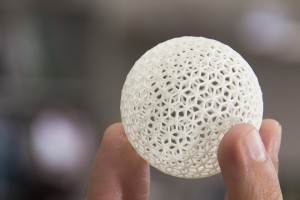 3D printing is just some science-fiction concept described in movies and TV shows; it’s a working technology that’s helping to shape a variety of industries, including manufacturing.
3D printing is just some science-fiction concept described in movies and TV shows; it’s a working technology that’s helping to shape a variety of industries, including manufacturing.
Also known as additive manufacturing, 3D printing refers to the creation of three-dimensional object using a computer and the necessary base materials. Objects are designed in the computer’s user interface, at which point it creates them from the base materials. Granted, this is a very basic explanation of how 3D printing works, but most 3D printing applications follow this structure. So, how exactly is the technology being used in manufacturing?
Split-Testing Product Variations
One of the many ways in which 3D printing is used in manufacturing is to split-test two or more variations of a product design. Manufacturers can easily alter their product’s existing design, comparing the two versions to determine which one is best.
Automation
Manufacturers can automate many processes associated with product production that were previously done manually. Rather than hiring an employee to build products from hand, manufacturers can use 3D printers. Some processes still require manned labor, but many basic processes can be automated thanks to 3D printing technology.
Shorter Production Time
Of course, shorter production time is directly linked to automation. By automating many processes associated with manufacturing, companies can cut down on their production times.
Low-Volume Production
A lesser-known benefit of 3D printing is manufacturing is low-volume production. As explained in this Forbes article, manufacturing companies are often committed to creating a large number of products using traditional techniques. Because of its minimal setup costs, however, 3D printing allows these companies to produce smaller amounts of products.
Automatic Inventory Tracking
The benefits of 3D printing in manufacturing don’t end there. The Forbes article cited above also reveals another benefit: automatic inventory tracking. When using 3D printers, manufacturing companies automatically create an inventory of their materials and products produced. This is a huge benefit that can prevent products from running out of stock.
These are just a few of the ways in which manufacturers are using 3D printing technology. It’s worth noting that 3D printing is still in its early days of development. While the technology works, there’s still room for improvement. However, it’s safe to say that more and more manufacturing companies will embrace the technology in the years to come, due to these benefits and others.
